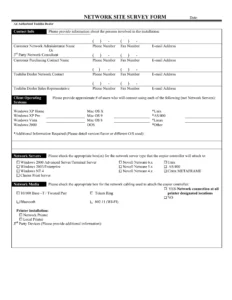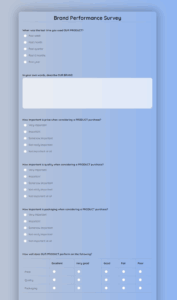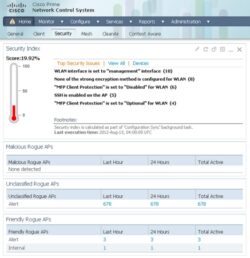Embarking on a new wireless network deployment, or even optimizing an existing one, can feel like navigating a complex maze without a map. You might wonder how to ensure reliable coverage, minimize interference, and provide seamless connectivity for all your users. The secret to unlocking a robust and efficient wireless environment often lies in a thorough planning phase, specifically a meticulous wireless network site survey. This isn’t just about placing access points; it’s about understanding the unique characteristics of your physical space and the demands of your network users.
A well-executed site survey acts as the blueprint for your wireless success, identifying potential pitfalls before they become costly problems. But how do you ensure consistency, gather all the necessary data, and streamline this crucial process? That’s precisely where a comprehensive wireless network site survey template becomes an indispensable tool. It provides a structured framework, ensuring no critical detail is overlooked and that your findings are consistent and actionable, leading to a truly optimized network.
The Essentials of a Comprehensive Wireless Network Site Survey Template
A robust wireless network site survey template is much more than a simple checklist; it’s a living document that guides you through every phase of the survey process, from initial client discussions to final report generation. It ensures that every piece of relevant information is captured systematically, allowing for accurate analysis and informed decisions regarding access point placement, power settings, and channel planning. Without a standardized approach, critical data points can be missed, leading to a network that underperforms or fails to meet user expectations. This template fosters uniformity across different projects and technicians, guaranteeing a high standard of data collection and ultimately, a superior wireless network design.
Pre-Survey Preparation and Information Gathering
Before stepping foot on the site, a significant portion of the survey work should already be underway. Your wireless network site survey template should prompt you to gather vital background information. This includes understanding the client’s business objectives, the expected number and types of devices, peak usage times, and any existing network infrastructure. Collecting floor plans, identifying building materials (which significantly impact signal propagation), and understanding aesthetic considerations are also crucial. This preparatory phase sets the stage for an efficient on-site visit and ensures that the technical survey aligns with the client’s actual needs.
On-Site Data Collection and Analysis
Once on site, the template guides the systematic collection of actual RF data. This involves measuring signal strength, identifying sources of interference, and mapping out coverage areas using specialized software. The template should include sections for noting down environmental factors like potential obstructions, the location of existing wired drops, and any unique challenges specific to the building, such as dense walls or elevator shafts. It’s also important to document where initial measurements are taken, the tools used, and the methodology employed, ensuring repeatability and accurate record-keeping for future reference or troubleshooting.
Post-Survey Reporting and Recommendations
The final, yet equally critical, phase involves compiling all the gathered information into a coherent report. Your wireless network site survey template should provide a structured outline for presenting your findings, including heatmaps illustrating coverage, signal strength, and interference levels. It should also guide you in formulating clear, actionable recommendations for access point placement, hardware requirements, and network configuration settings. This section is where the raw data transforms into a strategic plan, detailing a bill of materials, potential challenges, and a clear roadmap for implementation, ensuring the client understands the proposed solution and its benefits.
Leveraging Your Wireless Network Site Survey Template for Success
Having a fantastic template is just the first step; truly leveraging it for success means integrating it seamlessly into your project workflow and adapting it to various scenarios. Think of it as a living document that evolves with your experience and the ever-changing landscape of wireless technology. It’s not a static form to fill out, but a dynamic tool that empowers your team to deliver exceptional results every time. By establishing a clear process around its use, you ensure consistency, reduce errors, and foster a more efficient and professional approach to network design.
First, consider the importance of customization. While a core template provides a solid foundation, every environment presents unique challenges. Your template should be flexible enough to allow for specific notes on unusual building materials, unique usage patterns, or regulatory compliance requirements. Encouraging your team to add custom sections or specific prompts for specialized surveys (e.g., voice-over-Wi-Fi, IoT deployments) ensures that the template remains relevant and comprehensive, no matter the project scope or complexity.
Next, focus on training and consistency. Even the best template is only as effective as the people using it. Provide thorough training to all technicians on how to accurately use the wireless network site survey template, interpret its sections, and properly document their findings. Implement quality control checks, perhaps by having a senior technician review initial survey reports. This not only catches potential errors early but also helps standardize the data collection process across your entire team, leading to more reliable and comparable results project after project.
Finally, establish a feedback loop for continuous improvement. After each survey is completed, take time to review the template’s effectiveness. Were there sections that felt redundant? Was anything critical missed? Did the format facilitate clear reporting? Gather feedback from your survey teams and clients. Iteratively refine your template based on real-world experiences and emerging industry best practices. This ongoing optimization ensures that your template remains a cutting-edge tool, continually enhancing the quality and efficiency of your wireless network deployments.
A well-designed and consistently applied template dramatically streamlines the complex process of planning and deploying wireless networks. It transforms a potentially chaotic undertaking into a structured, predictable, and highly efficient project, leading to optimal network performance and satisfied users. Embracing this disciplined approach is key to achieving robust, reliable connectivity that meets the demands of today’s always-on world.



